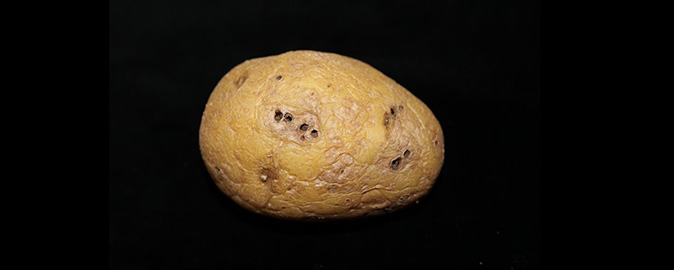ElatPro

- Acronym: ElatPro
- Title: Spotting the needle in a haystack: Predicting wireworm activity in top soil for integrated pest management in arable crops
- Countries involved: AT, BE, FR, DE, IT, CH
- Total budget: € 874.149
Making wireworm behaviour easier to predict
Wireworms – the abundant, soil-dwelling larvae of click beetles – are big trouble for a range of agricultural crops, including potatoes, maize and vegetables. Typically, wireworms damage crops when they forage in the upper soil layers and munch at the crops’ below-ground parts.
Unfortunately, this behaviour does not necessarily make wireworms easily accessible to pest control because they burrow downwards into the depths of the soil when upper soil conditions are unfavourable or when they need to moult or hibernate.
Predicting wireworms’ vertical movements between soil layers and identifying when the wireworms actually dwell in the upper layers is crucial for the decision and timing of control measures against these pests.
A new European project involving scientists from 14 different research and other institutions in Austria, Belgium, France, Germany, Italy and Switzerland will shed light on wireworm behaviour and biology. The three-year project, entitled ElatPro, has a total budget of € 874.149.
The aim of the project is to fill in the gaps of knowledge about wireworm activity in order to significantly improve the current predictive models and, based on the knowledge generated from the project, to develop a decision support system which is applicable across European arable land.
Wireworms are one of the most difficult pests to control for mainly two reasons. In the first place, wireworms show considerable vertical movement in the soil. These vertical migrations make it difficult to estimate potential yield loss, define damage thresholds based on wireworms caught in bait traps and implement effective control measures.
In the second place, there are several different species occurring in European agriculture. Although their differences are difficult if not impossible to spot with the naked eye, they nevertheless have different behaviours, biology and ecology. This calls for species-specific control measures.
A decision support system that can forecast wireworm activity in the upper soil layers already exists. It is based on soil moisture, temperature and soil type and works well in Germany, where it was developed. However, when applied in Austria, it performed poorly, probably because there are additional factors that need to be taken into consideration, such as species-specific movement behaviour, larval age, root availability and plant volatiles.
Coordinated field studies in the project countries will help identify the main pestiferous wireworm species in the different regions and examine their species-specific migration behaviour, which are important prerequisites for a widely applicable integrated pest management strategy against wireworms.
For more information about the project
please contact:
Mrs. Katharina Wechselberger
Austrian Agency for Health and Food Safety
Austria
E-mail: Katharina.wechselberger@ages.at